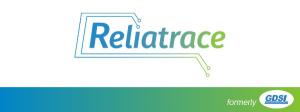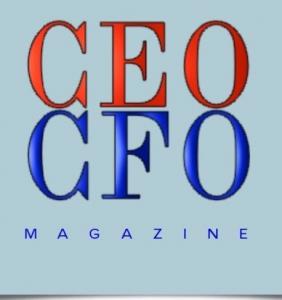President and CEO Mark Ester on how Reliatrace, Inc. is Heating Up the Marketplace
In an interview with CEOCFO Magazine, Reliatrace, Inc. President & CEO Mark Ester discusses their new approach to heater circuits and membrane switches
AMERY, WISCONSIN, US, May 6, 2021 /EINPresswire.com/ -- CEOCFO Magazine, an independent business and investor publication that highlights important technologies and companies, today announced an interview (https://www.ceocfointerviews.com/reliatrace21.html) with Mark Ester, President and CEO of Reliatrace, Inc., a printed electronics company headquartered in Amery, WI, providing Flexible heater circuits and membrane switches for highly-regulated industries such as healthcare, agricultural and construction machinery, that require durable electronics in harsh environments. “When it comes to potential applications for heater circuits, the sky is the limit.”
An accompanying website and video (www.raisenne.com) further details Raisenne, a micro-thin alternative to a yeast dough proofing box.
As Mr. Ester explained in the interview, "We are a designer and manufacturer of printed circuitry. Our history has been mainly with membrane switches and sensors. Recently we have taken on a new capability to screen print Positive Temperature Coefficient (PTC) ink, which means we can build heaters that do not require a controller or a thermostat. The temperature control is provided by the ink and the pattern of the ink deposit. We build to a targeted temperature which will not be exceeded.” He continued, “By screen printing we are basically putting down a very thin coating like paint and probably not even that thick. It is conductive ink. Typically, we use silver and graphite or carbon to print a circuit. That has been our history but now that we can add the Positive Temperature Coefficient ink to that, it gives us a chance to provide a safer, lower cost alternative to copper circuit heaters, which require a temperature controller. Copper is a thicker and heavier construction and if the controller fails, the temperature can get out of hand and burn. With the Positive Temperature Coefficient ink, it cannot go above the targeted temperature because it is the ink that controls it and not an external controller like a thermostat or thermistor.”
Discussing their first product Mr. Ester tells CEOCFO Magazine’s Senior Editor Lynn Fosse, “We are working very closely with a manufacturer of the PTC ink. They are learning from us and we are learning from them the best way to use this ink and the capabilities that it has. This research has led us to develop our own commercial product, which we are selling direct to consumer. It is a bread dough-rising device. We call it Raisenne (www.raisenne.com), and it allows us to put the temperature at the perfect level for any kind of yeast dough rising. It provides the perfect rising temperature and raises dough in less time.”
As for future applications for heater circuits Mr. Ester told CEOCFO, “When it comes to potential applications for heater circuits, the sky is the limit. We have seen multiple opportunities to replace copper heater circuits, where you have seat heaters, and heaters that help with medical diagnosis. One of the first ones we talked about was a pet heater so they would have a warm bed in an outdoor environment. Anything that must be heated, can be heated with Positive Temperature Coefficient ink and it will not exceed the target temperature.”
Asked why Reliatrace should standout from the many new ideas and companies Mr. Ester responded, “We do have the patented technology, combining double-sided printing with the PTC inks. One of the advantages that gives us is we can have even distribution of heat on the heating surface, and you do not have to interrupt that heat pattern by printing busbars on the top side right along next to PTC inks. It gives us a more even heat distribution and allows us to go into smaller spaces providing heat with the proven reliability of our printing process. It is very important that we bring the tail traces out from the heater circuit on the backside of the film, so that when you bend that tail down to a controller below, the printed traces are in compression, rather than expansion. If you print everything on the topside and you bend the tail traces down to a printed circuit board, it is going to stretch those inks making it easier to create opens due to cracks or bends. We have a definite advantage with our approach, and we feel that with the patent we are gaining a lot more attention for that capability.”
Contact:
Lynn Fosse
Senior Editor
CEOCFO Magazine
352-431-3400
lf@ceocfomail.com
Lynn Fosse, Senior Editor
CEOCFO Magazine
+1 352-431-3400
email us here



